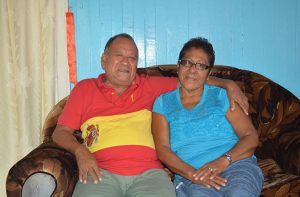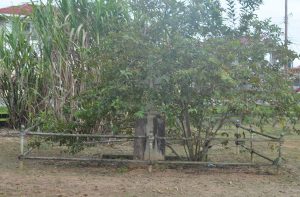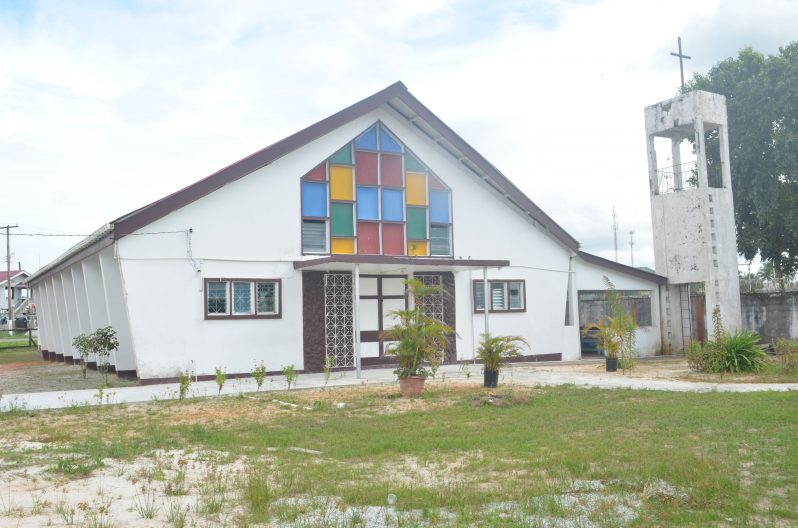DID you know that the St. John the Baptist Anglican Church is the oldest church in Bartica? Or for that matter that Bartica was formerly known as Bartica Grove?
In fact, Bartica Grove, which took its name from the Amerindian word, Bartica or ‘red earth’, was one of the earliest Anglican missionary settlements in the then British Guiana.
In 1843, seven years after the Bishop of Barbados paid a visit to Bartica, a church that was built in honour of St. John the Baptist was consecrated by the Bishop of Guiana.
The wooden structure was built along the bank of the Essequibo River in the area now known as Triangle Street.
“Because of the establishment of the Parish of the Anglican Church, families who lived along the Mazaruni River came to take up residence in Bartica,” says Lydia Elizabeth Moonsammy.
“They came not only for church attendance, but mainly to access schooling for their children, since it was also the Anglicans who started the first school in Bartica,” she told the Guyana Chronicle.
CHRONICLING THE HISTORY
Moonsammy, who attended St. John’s since a child with her grandmother, Catherine Garraway Boyan, has spent years chronicling the history of Bartica.
Her intention is to compile a book, dating back to 1829 when the Church Missionary Society established the area to conduct missionary work, to the present.
According to Ms Moonsammy, while the St. John’s has been in existence for close to two centiries, there is not much written history on its genesis and growth.

“Over the first century of its existence,” she said, “much was not really written on the history of the Church; and some may have been journalled by priests and canons, but have not found their way into our history books.
“Most of what is known locally is drawn from the stories passed on from the generations of its Founding Families, many of whom have served in one capacity or another over the years in the parish, either as altar servers, lectors or vestry members.”
What is public knowledge, however, is that the church had a cemetery within its yard, but following the establishment of the Sorrow (Sarah) Hill Cemetery, it was closed. Today, the tombs are a poignant reminder of what once was.
Also erected in the compound is a monument in honour of The Reverend Pierce and his family who perished amongst the rapids of the Essequibo River in the mid-19th Century whilst on a mission to minister to residents in a small community along its banks.
“With the coming of the famous priest, Father Dorman in the late 1950s,” Ms Moonsammy said, “the parish saw a revival; and plans were made to rehabilitate the old wooden structure using concrete.
“This was started in the 1960s; and upon completion of the new building, it was dedicated in March 1970.”
BY SELF-HELP
Seventy-one-year-old Mr Eustace Boyan, who’s a member of St John’s since he was nine, recalled that the church was rebuilt through self-help; that he and his wife, Arlene, were among members who helped in its reconstruction.
At the time it was rebuilt, he said, the church had a large following; but as Bartica continues to expand, some of the followers have opted to attend other denominations.
“On the first Sunday of the month; Mother’s Union Day, the church would have a lot of people,” Mr Boyan said.
“It would be packed! But on regular days, many of the people you see are the older folks like us.”

Currently, St. John’s is headed by Father Alfred David, who is originally from the village of Kaburi, some 72 miles up the Potaro Road.
According to Father David, despite the changing trends, the church remains as relevant as it did 174 years ago when it was established.
According to him, on special occasions like Ash Wednesday and Easter Sunday, the church would be full to capacity; with over 300 persons. But during regular services, however, an average of 160 persons would be in attendance.
Additionally, the parish consists of 13 “daughter churches” in the Essequibo, Mazaruni and Cuyuni Rivers.
Notably, St. John’s has had a long line of priests and canons who have given distinguished service over the years.
These include Father Dorman, Canon Goodridge, Father Dick-Grant, and Father Roland among others.
In addition to the priests and canons, there were many other members who played critical roles in keeping the church alive. Among those persons was the late Mr Oscar Smart, a long-time organist at the church.



.jpg)








